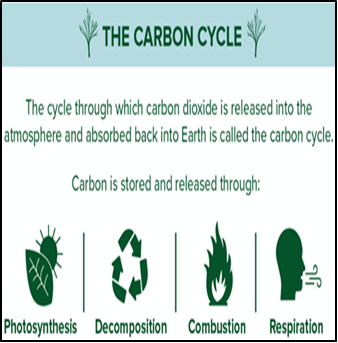COLD WAR NUCLEAR DATA REVEALS FASTER CARBON CYCLING
Why in the news?
A new study shows plants absorb and release carbon dioxide faster than previously thought, using Cold War nuclear test data to challenge existing climate models and predictions.
Study Highlights New Insights into Carbon Cycle and Climate Models:
Plant Carbon Absorption and Release:
-
- A recent study in Science suggests that plants absorb more carbon dioxide (CO2) from the atmosphere than previously thought, but they also release it back into the environment sooner than expected.
- The carbon cycle, which naturally removes excess CO2, has become a key focus in climate mitigation efforts, as plants’ ability to store carbon could help offset fossil fuel emissions.
source:scribd
Use of Cold War Nuclear Test Data:
-
- Researchers used data from nuclear bomb tests conducted during the Cold War to study carbon cycling. These tests released radioactive carbon-14 into the atmosphere, which plants absorbed during photosynthesis.
- By tracking changes in radiocarbon levels from 1963 to 1967, the study found that carbon was being cycled through vegetation faster than previously believed, suggesting plants are storing and releasing carbon at a quicker pace.
About The Fast Carbon Cycle:
Carbon Movement and Quantity:
Role of Carbon in Biology:
Energy Storage and Release:
Key Components:
Chemical Reaction:
Carbon Flow and Release: Processes:
Seasonal Variations:
|




